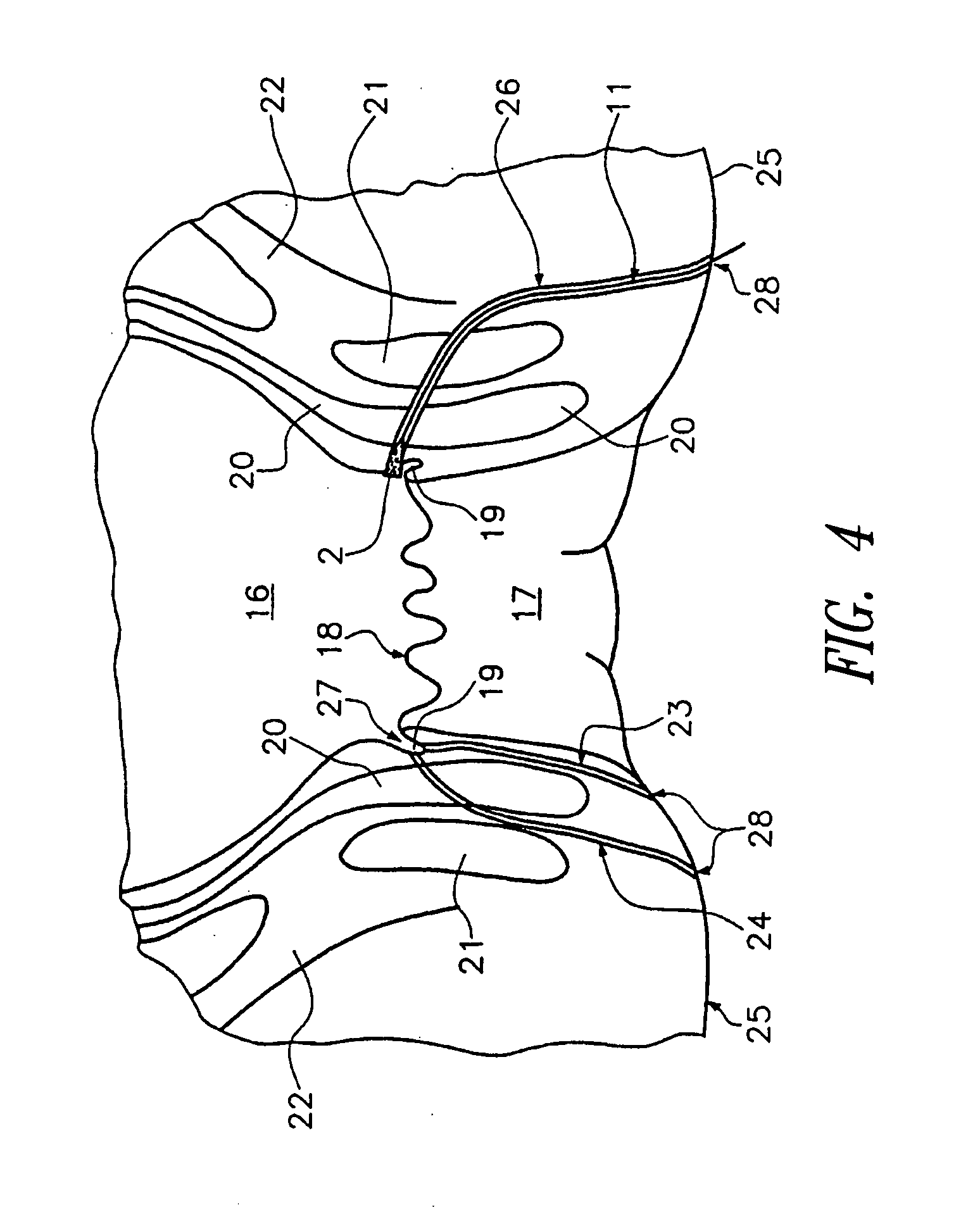Fistula blocker
- Summary
- Abstract
- Description
- Claims
- Application Information
AI Technical Summary
Benefits of technology
Problems solved by technology
Method used
Image
Examples
first embodiment
[0043] In FIG. 1, a fistula blocker 1 according to this invention for sanifying a fistula passage is shown. The fistula blocker has a plug-like closure device 2 which can be inserted into a fistula passage in the direction of insertion 3. The closure body 2 has a conical shape with a caudal thick end and a cranial thin end. The caudal end refers in this sense to the end contrary to the direction of insertion 3 while the cranial end is the end of the closure device 2 pointing in the direction of insertion 3.
[0044] The closure device 2 has a bearing surface 4 extending transverse to the direction of insertion 3 which is given with the conical shape by the surface of the cone's envelope. This surface is at least in places in contact with the wall of a fistula passage. The conical shape is rotationally symmetric to the longitudinal axis 5 of the closure device 2.
[0045] The cranial end of the closure device forms a guide section 6 and the caudal end of the closure device 2 forms a closi...
second embodiment
[0050] The closure device of the fistula blocker 1 has a closure section 7 with a concave outer shape expanding outward caudally. With the outer bearing surface 4 the fistula blocker 1 can get into contact with the fistula passage. The cranial guide section 6 of the closure device 2 has a shape which is arched somewhat convex forward and inwardly and which leads to the application string 11. In this way, the closure device 2 has somewhat of a bell shape longitudinally.
[0051] The closure device 2 is riddled on the inside with channels which via the channel openings 12 border on the outer surface of the closure device 2.
[0052] The closure device 2 is provided with an anchoring device 13 which has several barbed sections 14 distributed longitudinally to the girth and length of the closure device 2. The barbed sections 14 branch off laterally shored up from the closure device 2 and are aligned somewhat contrary to the direction of insertion 3. They are flexible to a limited extent.
third embodiment
[0053] In FIG. 3 a fistula blocker 1 according to the invention is shown. Identical reference symbols designate identical sections as in the details above so that in this regard reference can be made to the description above, unless something diverging from that is said below.
[0054] The closure device 2 has a somewhat egg-like shape the slimmer end of which is pointed in the direction of insertion 3. The closure device 2 has a spongy hollow structure which is illustrated in cross-section in the left half of the closure device 2. The spongy structure is shown in the form of several pores 15 which extend up to the outer surface of the closure device 2. The surface of the closure device 2 likewise has a correspondingly spongy structure. Accordingly, the closure device has a porous hollow structure inside.
[0055] In the right half, the closure device 2 is shown from the outside where for reasons of visibility the spongy structure has been deleted. On the outer side, the closure device 2...
PUM
 Login to View More
Login to View More Abstract
Description
Claims
Application Information
 Login to View More
Login to View More - R&D
- Intellectual Property
- Life Sciences
- Materials
- Tech Scout
- Unparalleled Data Quality
- Higher Quality Content
- 60% Fewer Hallucinations
Browse by: Latest US Patents, China's latest patents, Technical Efficacy Thesaurus, Application Domain, Technology Topic, Popular Technical Reports.
© 2025 PatSnap. All rights reserved.Legal|Privacy policy|Modern Slavery Act Transparency Statement|Sitemap|About US| Contact US: help@patsnap.com



